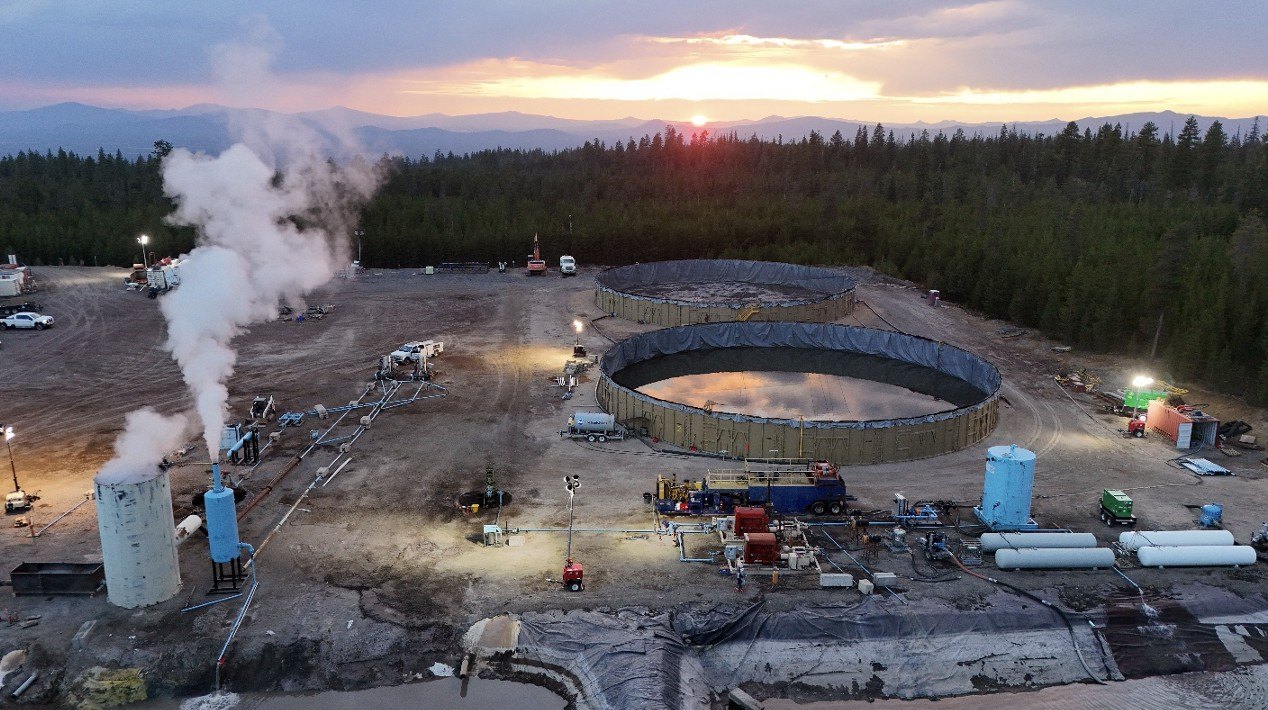The largest active volcano in Oregon is being drilled into as part of an effort to create a cleaner energy source.
Engineers are building a geothermal power plant that taps into the energy of the Newberry Volcano—the largest volcano in the Cascades volcanic arc.
In 2026, the Texas-based startup Mazama Energy is set to start selling that geothermal power to nearby homes and businesses, but the power won’t be available until the following year.
“Mazama Energy is on track to deliver affordable, clean power to local homes and businesses in Oregon by late 2027, thanks to our pioneering efforts in tapping a virtually limitless geothermal resource,” Sriram Vasantharajan, CEO of Mazama Energy, tells Realtor.com®.
“Our Newberry pilot project sets a new industry standard for enhanced geothermal systems, and the Mazama team is excited to help bring dependable, cost-effective clean energy to the community.”
Growing demand for power
As data centers and AI workloads surge, the world faces an unprecedented demand for continuous, high-density power.
“The AI boom is driving electricity demand through the roof,” Andrew Meyer, head of data at Arbor, tells Realtor.com. “We are entering the steepest electricity growth curve since World War II.”
To meet that demand, Vasantharajan says the Newberry pilot “provides a blueprint for unlocking baseload, utility-scale, carbon-free energy from the Earth’s crust worldwide, which is what the next generation of AI and cloud infrastructure requires.”
At this time, geothermal produces less than 1% of the world’s electricity—but, according to the International Energy Agency, that share could increase to 8% by 2050.
How it works
The Newberry project taps into hotter rock—reaching 629 degrees—than any previous enhanced geothermal effort, with Mazama Energy drilling nearly 2 miles into the earth and injecting water into a man-made hot rock reservoir.
As the water travels downward, it absorbs intense geothermal heat, then returns to the surface as steam to drive a turbine and generate electricity.
Afterward, the steam is cooled, condensed back into water, and reinjected underground, allowing the closed-loop system to operate continuously.

What the future holds
Mazama Energy is aiming to become the first company to make electricity from superhot rock of 705 degrees or higher.
That’s when water enters a “supercritical” state where it behaves like a liquid–gas hybrid, storing heat efficiently while flowing easily, making it ideal for generating electricity.
Economic modeling from the Clean Air Task Force suggests that superhot geothermal energy could ultimately be priced on par with natural gas or solar while avoiding fossil-fuel pollution.
“Superhot rock geothermal is on track to match or undercut the price of natural gas and solar, while providing a unique advantage: reliable, around-the-clock clean power with a footprint much smaller than solar,” Vasantharajan tells Realtor.com.
“As this technology scales, it’s emerging as one of the most cost-efficient and dependable baseload energy sources available, and Mazama is leading the way in demonstrating its full potential when it’s needed most.”
Mazama Energy reports that a single well harnessing volcanic heat could generate enough electricity for 25,000 homes while using roughly 75% less water than traditional geothermal operations.
“Superhot rock geothermal unlocks a new era of energy—one where truly clean, reliable, and cost-stable power is available day and night, nearly anywhere in the world,” says Vasantharajan.
“As innovation advances, this technology promises to shrink our environmental footprint while replacing energy poverty with sustainable security for generations to come.”

